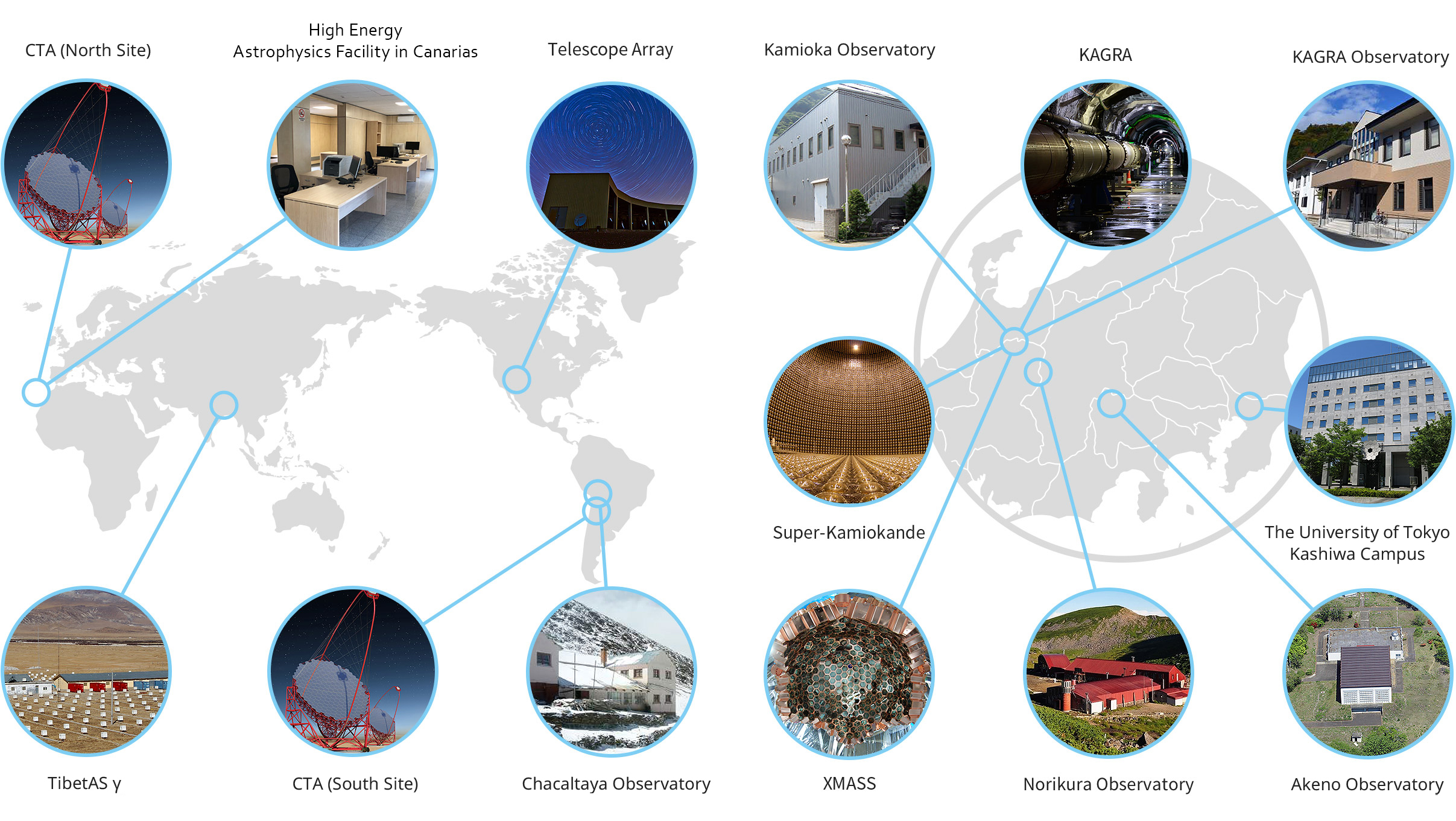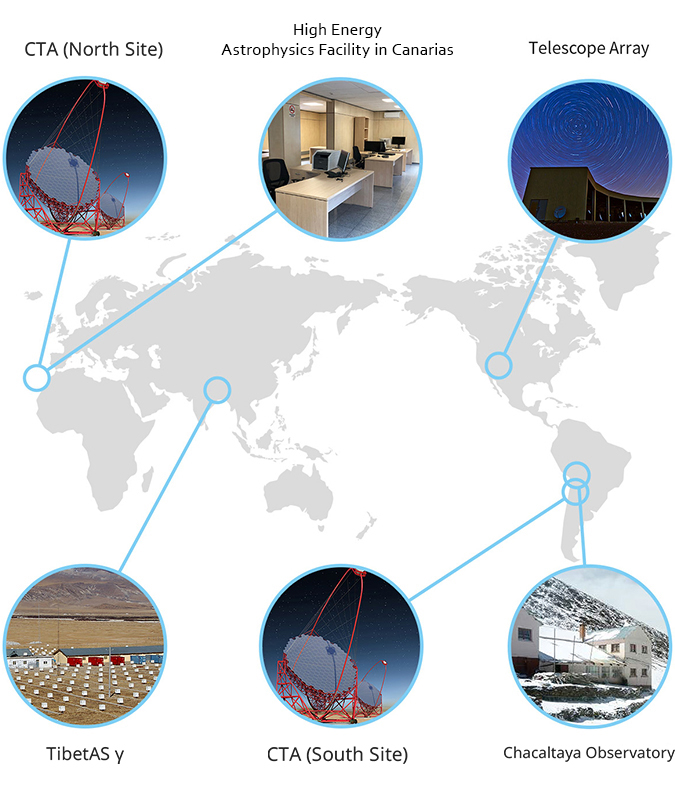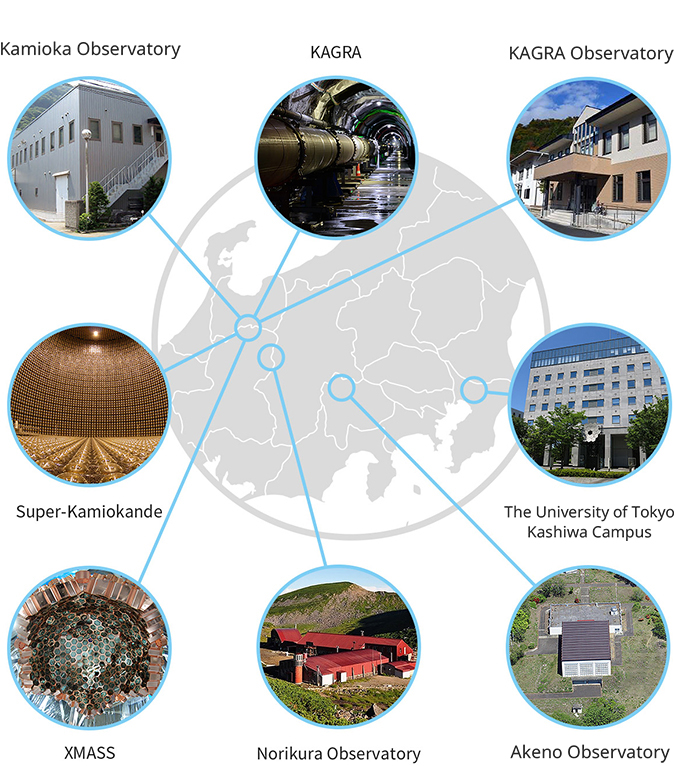Overseas
Japan

Overseas

Japan

CTA (North Site)
Aiming at detection of high energy gamma rays with Cherenkov Telescope Array (2,200 meters high) at the Instituto de Astrofisica de Canarias’ (IAC’s) Observatorio del Roque de los Muchachos in Villa de Garafia on the island of La Palma, Canary Islands, Spain.
High Energy Astrophysics Facility in Canarias
High Energy Astrophysics Facility in Canarias, established on April 1, 2019 in La Palma, Canary Islands, Spain is the actual base of international collaborations on CTA (Cherenkov Telescope Array) project co-hosted by CTA group of ICRR.
Telescope Array
Aiming at highest energy cosmic ray physics by detecting weak light from atmosphere.
TibetAS γ
Search for point sources of VHE cosmic gamma at Tibet heights.
CTA (South Site)
Aiming at detection of high energy gamma rays with Cherenkov Telescope Array (2,600 meters high) located in 10 km southeast of the European Southern Observatory’s (ESO’s) existing Paranal Observatory in the Atacama Desert in Chile.
Chacaltaya Observatory
Chacaltaya Observatory of Cosmic Physics has been jointly operated with Bolivia since 1962 at Mt.Chacaltaya, Bolivia, as the world-highest cosmic-ray laboratory (16˚21’S, 68˚08’W, 5300m a.s.l.).
Kamioka Observatory
Kamioka Observatory is located in Gifu prefecture, Japan. The observatory was established in 1995 to operate Super-Kamiokande, a 50,000-ton water Cherenkov detector located 1000m underground (2700m.w.e) in the Kamioka Mine.
KAGRA
KAGRA Observatory is located in Gifu prefecture, Japan. The observatory was established in 2016 to operate KAGRA gravitational-wave telescope, which is a 3 km laser interferometer with cryogenic sapphire mirrors, located 200 m underground site in Mt. Ikenoyama.
KAGRA Observatory
KAGRA Observatory located in Gifu prefecture, Japan was established in 2016 to operate KAGRA gravitational-wave telescope.
Super-Kamiokande
Detection of neutrinos and search for proton decays in a large water tank.
Kashiwa Campus
ICRR Headquarters and The Research Center for Cosmic Neutrinos (RCCN) are located in Kashiwa Campus, The University of Tokyo (Kashiwa city, Chiba prefecture).
XMASS
XMASS experiment aims to detect the cold dark matter in the universe directly using a liquid Xenon detector. The detector holds about 1ton of liquid Xenon and has been operated in the Kamioka mine.
Norikura Observatory
Norikura Observatory (2,770 meters high), founded in 1953 and attached to ICRR in 1976, provides facilities necessary for preparing for and carrying out cosmic ray experiments at a high altitude throughout the year.
Akeno Observatory
Akeno-cho, Hokuto-shi, Yamanashi,Japan.(Altitude 900m) Akeno Observatory started in April 1977. At the Akeno Observatory, extremely high-energy cosmic rays with energies exceeding 1020 eV were observed by the AGASA (Akeno Giant Air Shower Array) experiment.





